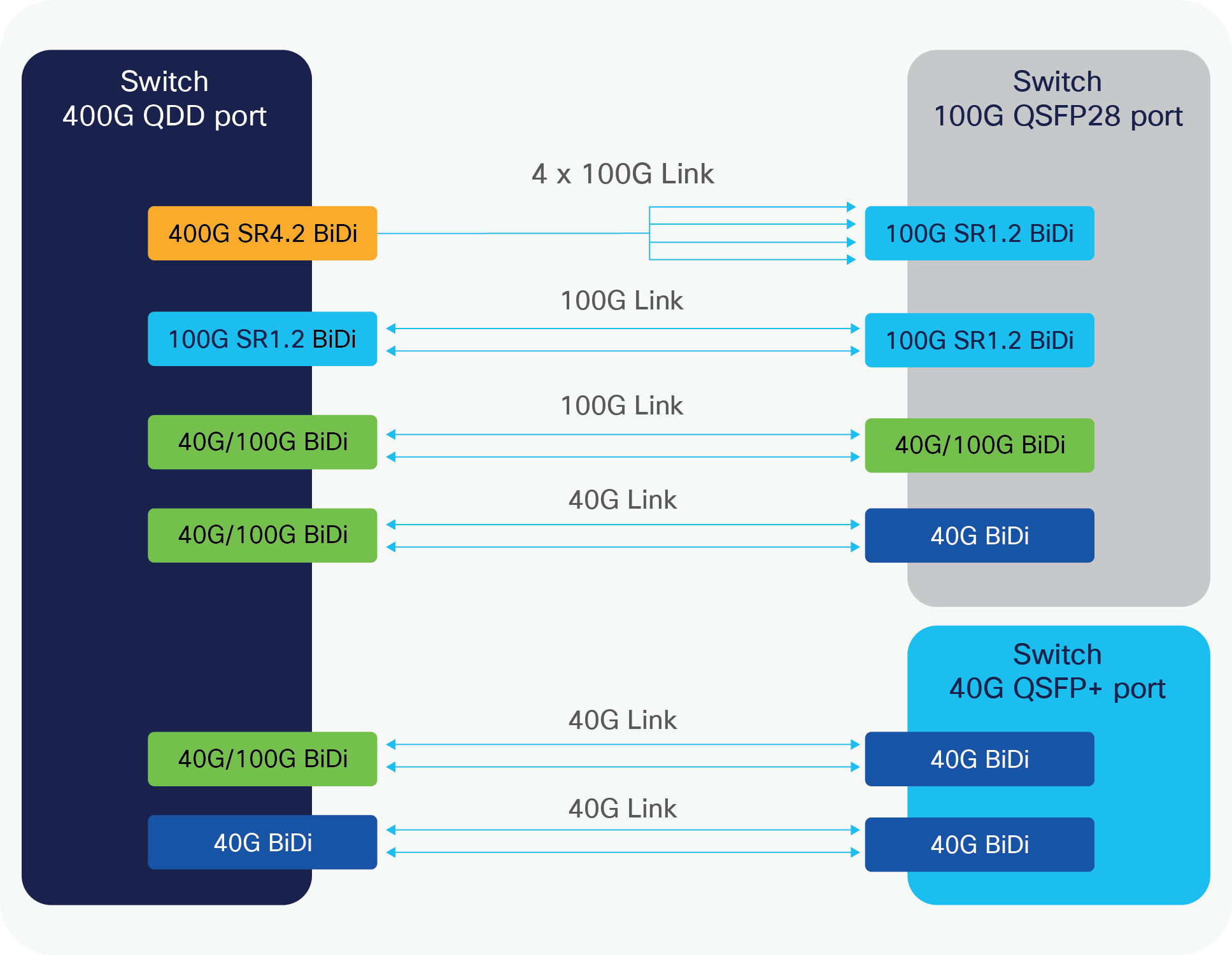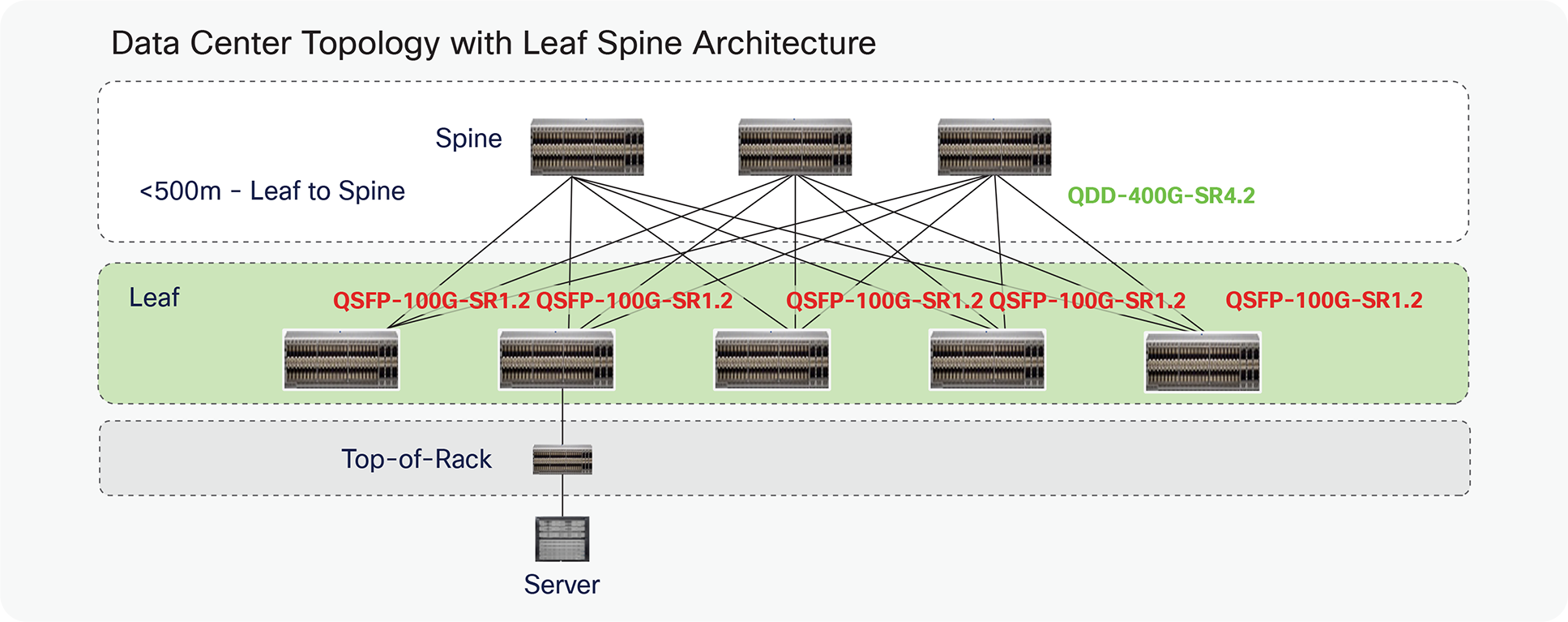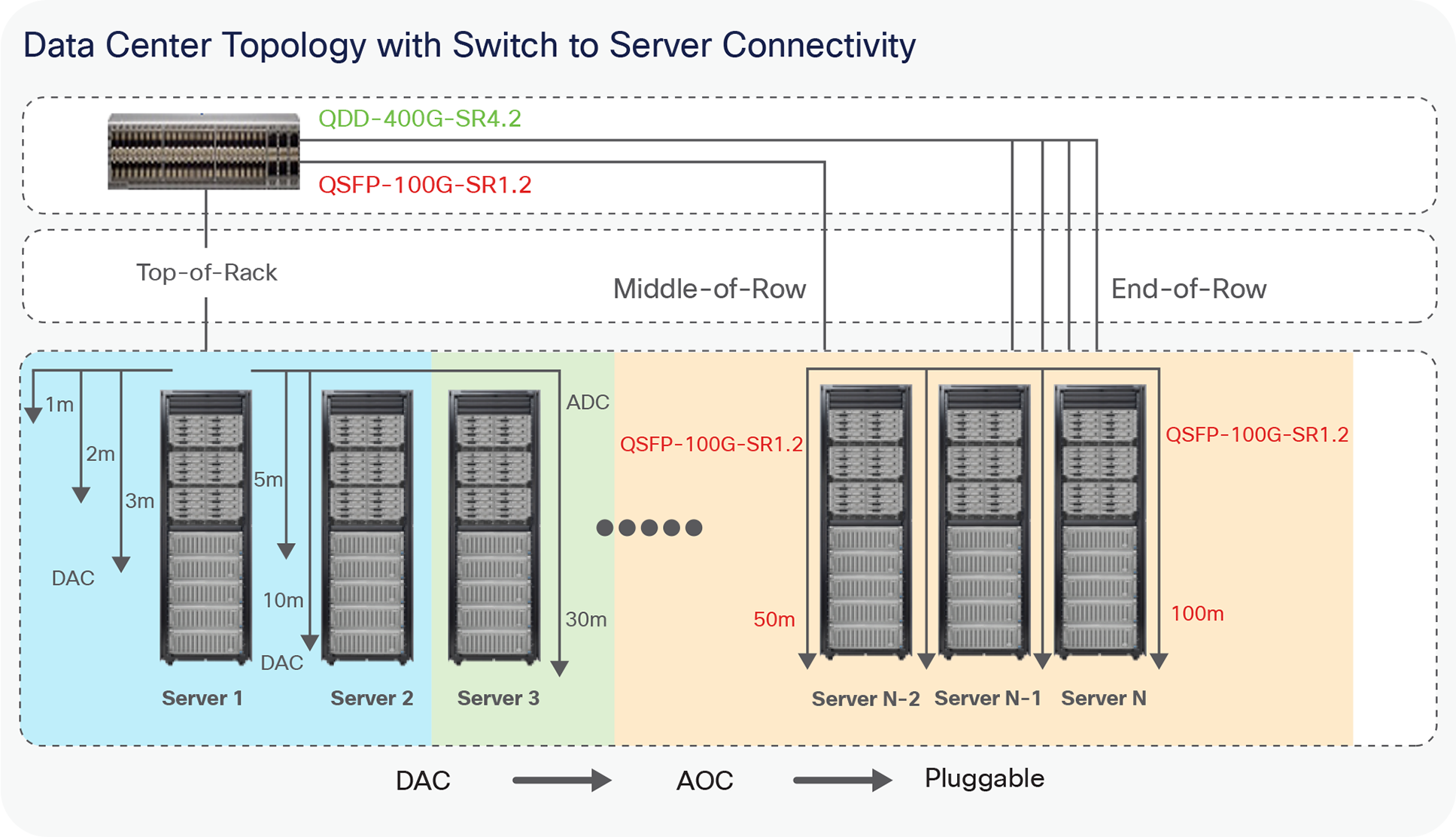Cisco 100Gbps QSFP100 SR1.2 BiDi Pluggable Transceiver At-a-Glance
Available Languages
Bias-Free Language
The documentation set for this product strives to use bias-free language. For the purposes of this documentation set, bias-free is defined as language that does not imply discrimination based on age, disability, gender, racial identity, ethnic identity, sexual orientation, socioeconomic status, and intersectionality. Exceptions may be present in the documentation due to language that is hardcoded in the user interfaces of the product software, language used based on RFP documentation, or language that is used by a referenced third-party product. Learn more about how Cisco is using Inclusive Language.
Expanding Cisco’s BiDi portfolio
The Cisco QSFP-100G-SR1.2 BiDi is a parallel Quad Small Form-factor Pluggable (QSFP28) Bi-Direction optical module that supports 100 Gbps bit rates. The module integrates four host electrical data into two optical lanes over a 2-fiber duplex LC optical multi-mode fiber. The QSFP 100G SR1.2 BiDi operates 50Gb PAM4 channels, for a total aggregate bandwidth of 100Gb. PAM4 technology enables 50Gb data rate with signaling at 25Gbaud rates. Reversely, on the receiver side, the module de-multiplexes 2 sets of optical input signal and converts them to 4 channels of electrical data. An optical fiber ribbon cable with an LC connector can be plugged into the QSFP28 module. The QSFP 100G SR1.2 BiDi is compliant to IEEE802.3bm 100GBASE-SR4.

The Cisco QSFP-100G-SR1.2 BiDi transceiver will operate with a Cisco QSFP-100G-SR1.2 BiDi for 100G connectivity. It can also connect to a Cisco 400 Gbps SR4.2 BiDi in a 4 x 100G breakout mode. The Cisco QSFP-100G-SR1.2 BiDi will not interoperate with the Cisco QSFP-40/100-SRBD.
Figure 1 below shows all the interoperability options for Cisco’s BiDi portfolio:

Cisco BiDi interoperability options
● Lower capital expenditure by reusing of the duplex LC Multimode Fiber (MMF) infrastructure
● Reduce operational expenditure by seamlessly upgrading to 100Gbps rate from 10Gbps SR or 40Gbps BiDi
● Future proof the network by providing connectivity to 400 Gbps rate
● Reduce transmission errors with KP4 Forward Error Correction (FEC) at 100Gbps data rate
Upgrade seamlessly from 40 Gb or 10 Gb to 100 Gbps with a path toward 400G
Mission-critical workloads such as artificial intelligence and machine learning are increasing the computation and traffic requirements within the fabric. This is driving a move to denser and higher-speed connectivity both within the leaf and spine and between the leaf/top-of-rack switch to the server.
In Figure 2 below, the, 400Gbps SR4.2 can be deployed in the spine layer, which is the backbone of the network, connecting to the leaf node in a breakout model. An alternative option would be to deploy the QSFP-100G-SR1.2 BiDi in both the spine and leaf nodes, with a path toward upgrading the spine nodes to 400G as bandwidth demand grows.

Leaf spine connectivity using QSFP-100G-SR1.2 optics
In Figure 3 below, given the reach and operational flexibility with pluggable transceivers compared to preassembled cable, operators may use the QSFP-100G-SR1.2 BiDi for top-of-rack connectivity to the servers or deploy 400G in the TOR and connect downstream to the server using 1 x QDD-400G-SR4.2 to 4 x QSFP-100G-SR1.2 in a breakout model.

Switch to server connectivity using QSFP-100G-SR1.2 optics
Much like the Cisco 40Gb BiDi and the Cisco 40/100Gbps BiDi transceiver, the Cisco QSFP-100G-SR1.2 BiDi allows data center operators to reuse their existing duplex LC-connectorized MMF infrastructure as they upgrade from 10G SR or 40Gb BiDi to 100G SR1.2 BiDi. By upgrading network equipment one end at a time, operators can exercise flexibility in schedules and budgets.
For more information about Cisco transceivers, see: https://www.cisco.com/site/us/en/products/networking/optics-transceiver-modules/index.html
For optics-to-optics and optics-to-platform compatibility, see: https://tmgmatrix.cisco.com/
For optics product information, see: https://copi.cisco.com/?tpid=1622